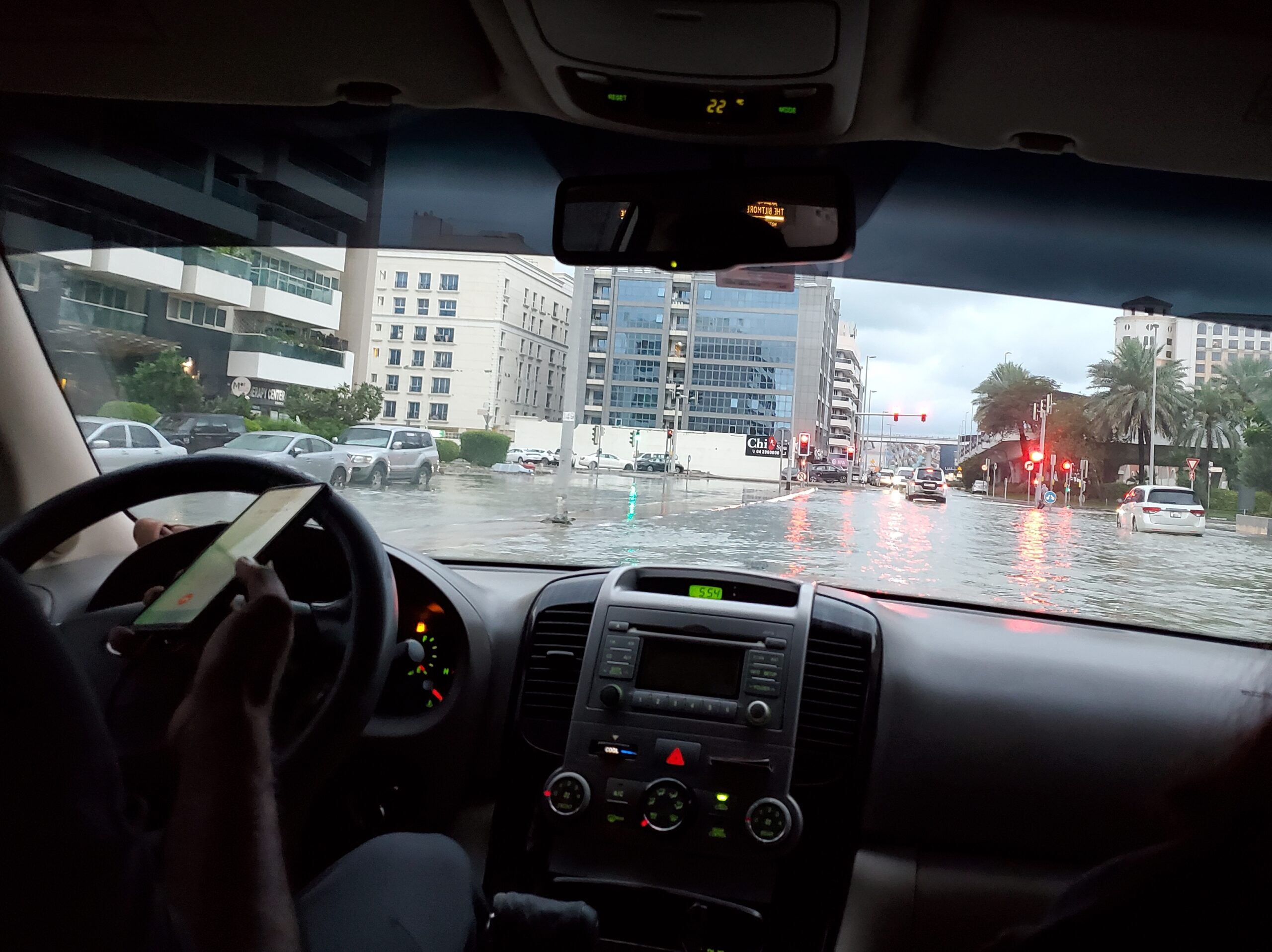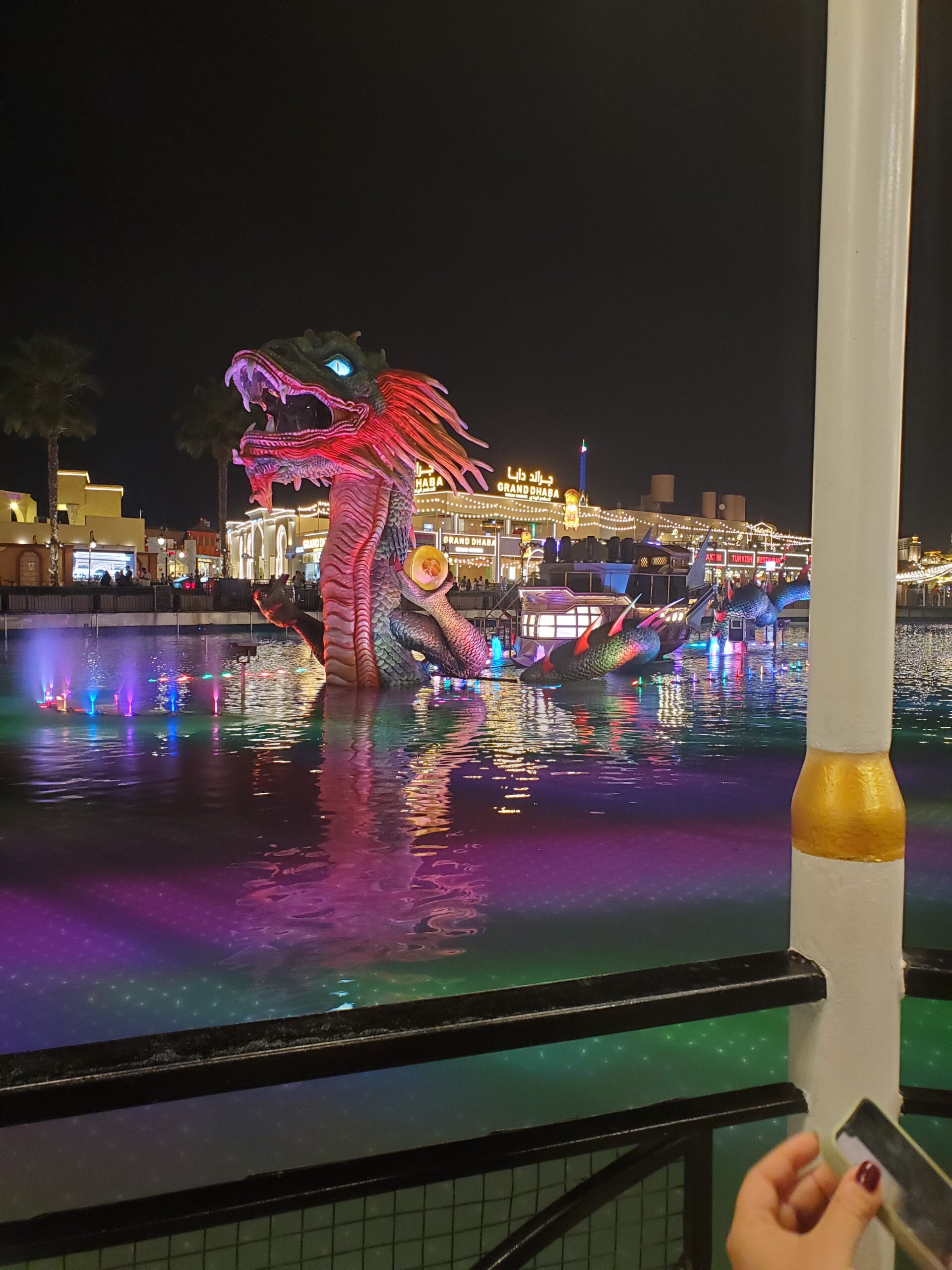How PhotovoiceWorldwide educators trained researchers and facilitators in advanced photovoice methods to learn more about the experience of people facing stigma in Pakistan.
by Diana Weggler
In April, PhotovoiceWorldwide educators Dr. Laura Lorenz, Stephanie Lloyd, and Erica Belli traveled to Dubai, UAE, to conduct a two-day, intensive training, “Advanced Photovoice Methods Training for Master Trainers.” The trainees were researchers, facilitators, and leaders who are currently working on the study, “Burns Rehabilitation: A multidisciplinary program for burns management, treatment and prevention in low-income countries.” The advanced photovoice training was offered as part of the 9th Global Mental Health Research Capacity and Capability Building Programme, which took place from April 15th through 24th, at the Grandeur Hotel – Al Barsha.
Funded by the National Institute for Health and Care Research (NIHR), Research and Innovation for Global Health Programme (RIGH), the Burns Rehabilitation project is a comprehensive, four-year effort by the Pakistan Institute of Living and Learning (PILL) and the University of Manchester (UK). The project’s main research question is: Is the implementation of a culturally adapted multidisciplinary care, quality, and rehabilitation programme for burn survivors clinically effective, cost-effective, sustainable, and scalable across Pakistan?
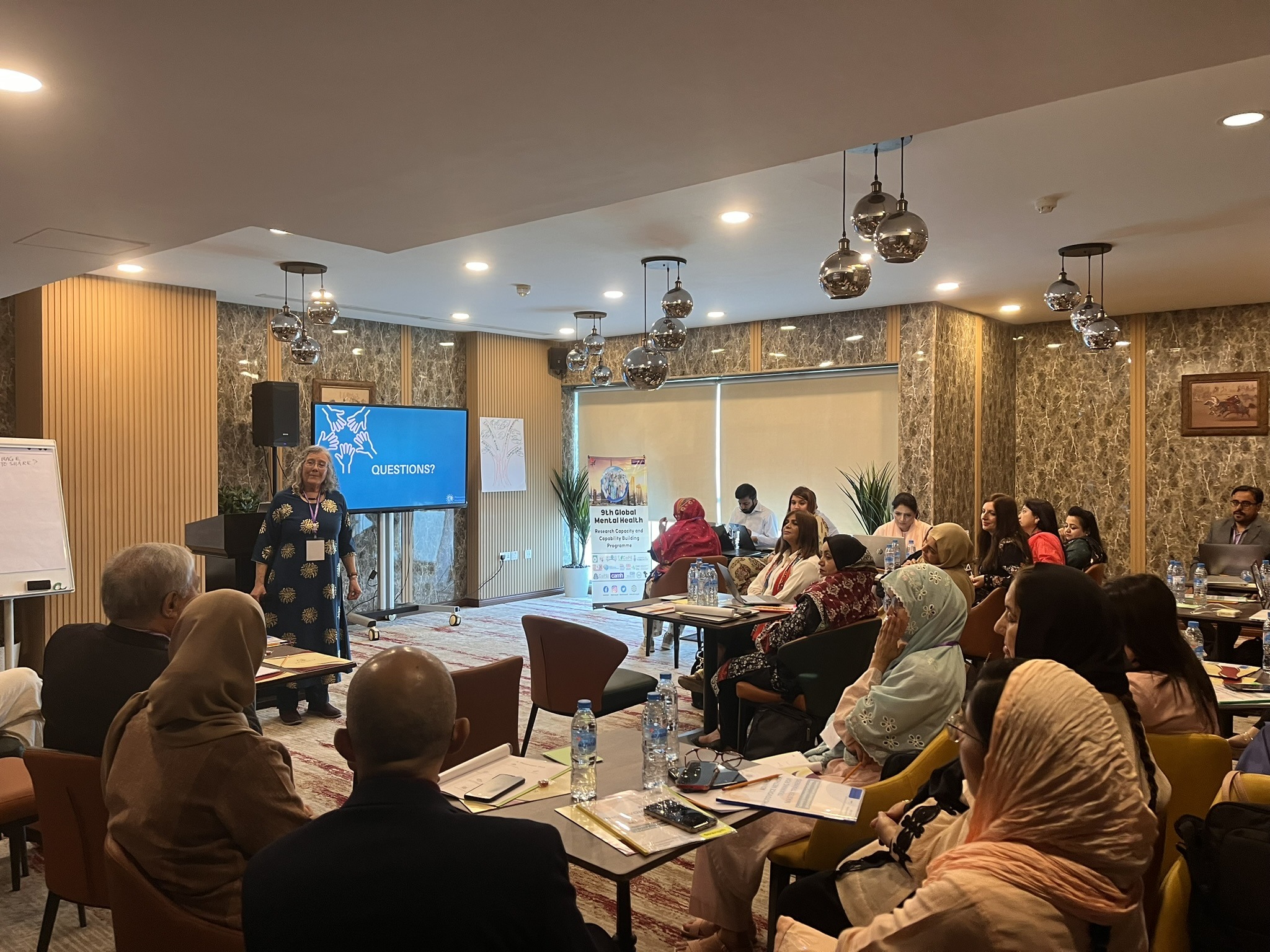
The Photovoice Worldwide team collaborated with PILL leaders and staff to tailor the advanced photovoice training for project staff who will plan and implement photovoice with people living with burn scars in Pakistan. “We worked very closely with the PILL team to develop the training,” Dr. Lorenz said. “They seek to better understand people’s lived experience with burn rehabilitation and scars through photos, captions, and discussions. The photovoice data will inform a social media campaign to address stigma, support prevention, and create awareness.”
Twenty-five individuals from Pakistan and the UK participated in the advanced training. Participants included clinicians, facilitators, researchers, and project leaders, the majority of whom interface either directly or indirectly with burn survivors. A prior Global Mental Health Capacity and Capability Building Programme had previously introduced the photovoice method; this April’s advanced photovoice training built on participants’ existing expertise.
“They were eager to learn and jumped right into the training tasks and activities,” Lorenz said. “Their enthusiasm and questions required us, as photovoice method educators, to dive even more deeply into the method with them.” Lloyd agreed. “It was a privilege to be invited into a room with such intelligent, curious, and thoughtful individuals, to share my knowledge of photovoice and hear about their plans to bring photovoice to burn survivors who will tell their stories for hope and advocacy,” said Lloyd.
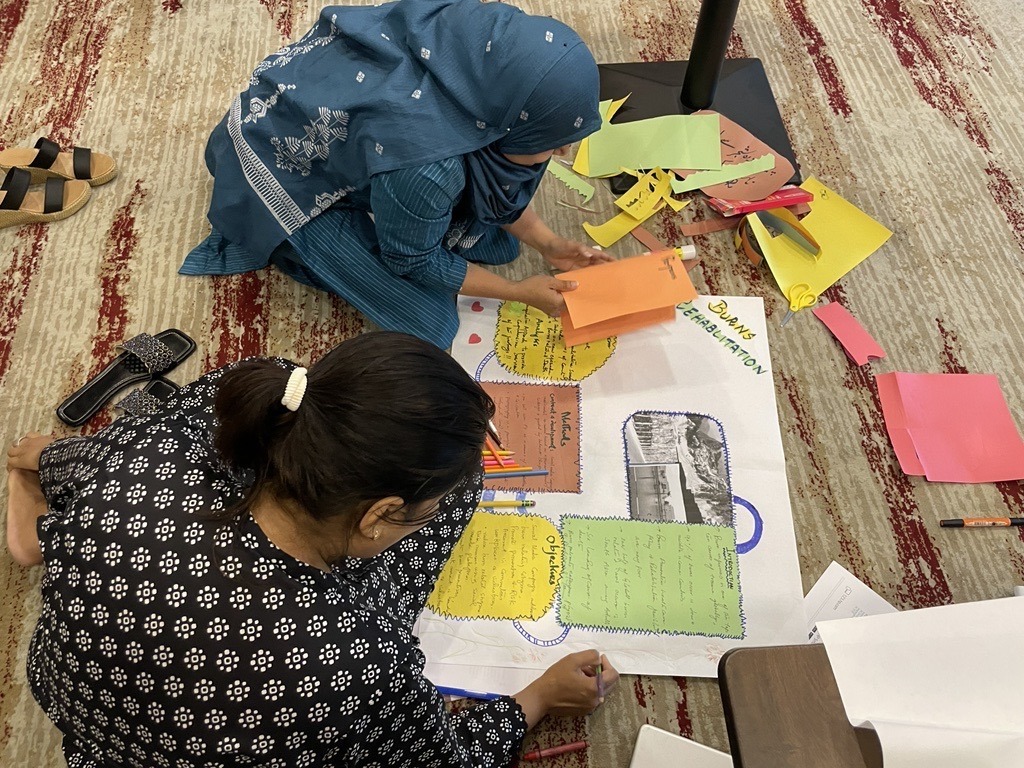
The room was set up with small tables, where people worked in teams on the training topics, which included facilitating photo discussions, supporting caption-writing, and storing and interpreting photovoice data. “We tried to keep the lectures short and focus on interactive work,” Lorenz said. After a day and a half of presentations, activities, and discussions, small groups enthusiastically went to work to put together a product using the photos, captions, and learnings from the training. Each team prepared an outreach poster that conveyed their learning and insights. “It was amazing to see the creative products that resulted, along with the excitement to share with other groups in the end,” Lloyd said.
According to Lorenz, training participants will play a range of roles on the photovoice work package of the Burns Rehabilitation project. “Some will facilitate photovoice projects. Others will supervise the facilitator teams, analyze the data, prepare social media messaging, and work to replicate the project model throughout Pakistan,” she said.
Photos, captions, and stories from the 10 Pakistan photovoice projects will be transformed by researchers and staff into culturally appropriate social media messaging to strengthen burn prevention efforts, increase access to burn rehabilitation services, and reduce stigma faced by people with burn scars. A range of data will be generated by the Burns Rehabilitation project’s six work packages, which include surveys, interviews, focus group discussions, quantitative research on burn rehabilitation effectiveness, policymaker engagement, and clinical training. Photovoice will help to bridge gaps in knowledge and awareness that exist among burn survivors, clinicians, policymakers, and communities.
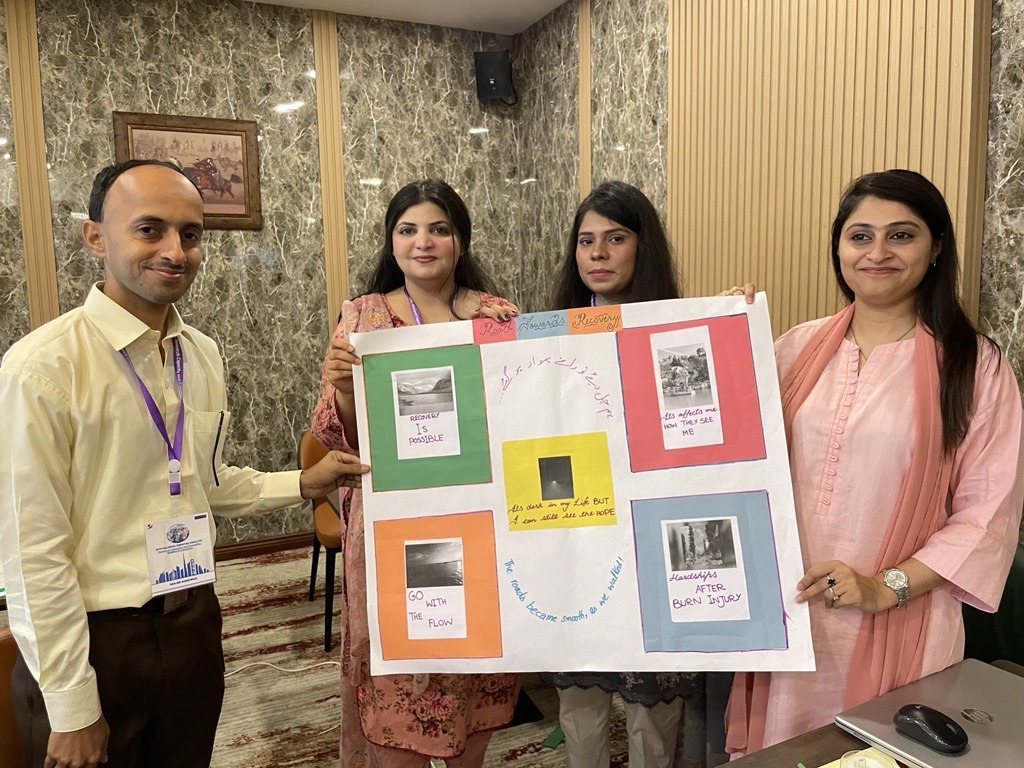
Participants had positive things to say in response to the two-day training: “The instructors were engaging and gave great feedback; the practice opportunities provided hands-on experience, which was helpful in developing empathic consideration for future participants; and it was nice engaging with other attendees on deeper relational levels.”
According to Belli, the learning process worked both ways. “Through preparation for this training – reading articles, speaking to experts, and learning about burn survivors’ experiences – I learned so much about the stages involved with care and healing for someone undergoing such tragic circumstances. I have a renewed respect for all medical professionals involved, and a deep appreciation of PILL’s mission to work towards burn prevention with photovoice.”
“I have a renewed respect for all medical professionals involved, and a deep appreciation of PILL’s mission to work towards burn prevention with photovoice.” —Erica Belli
As a follow-on to the training, Photovoice Worldwide and PILL staff are preparing a photovoice toolkit to inform consistent planning and implementation across photovoice sites. “Throughout the training in Dubai, we solicited input on what facilitators and managers want included in the toolkit in order to be successful with their projects,” Lorenz said. “Similar to our collaboration with PILL to develop the advanced photovoice training plan, the toolkit builds on the extensive work the PILL team has already done to prepare for their photovoice projects.”
The experience in Dubai is not one that the Photovoice Worldwide staff will soon forget, and not only because of the torrential rains and flooding that severely interrupted work, life, and school in this desert city for several days. “This experience with Burn Rehabilitation professionals allowed me to think more deeply about stigma related to appearances, and how photovoice can once again be a great way to share experiences and advocate for your life circumstances,” Belli said. “Burns are a painful injury to go through, both physically and mentally. My thoughts go to the ones affected by burn accidents and the incredible strength they show during their recovery and afterward.”
